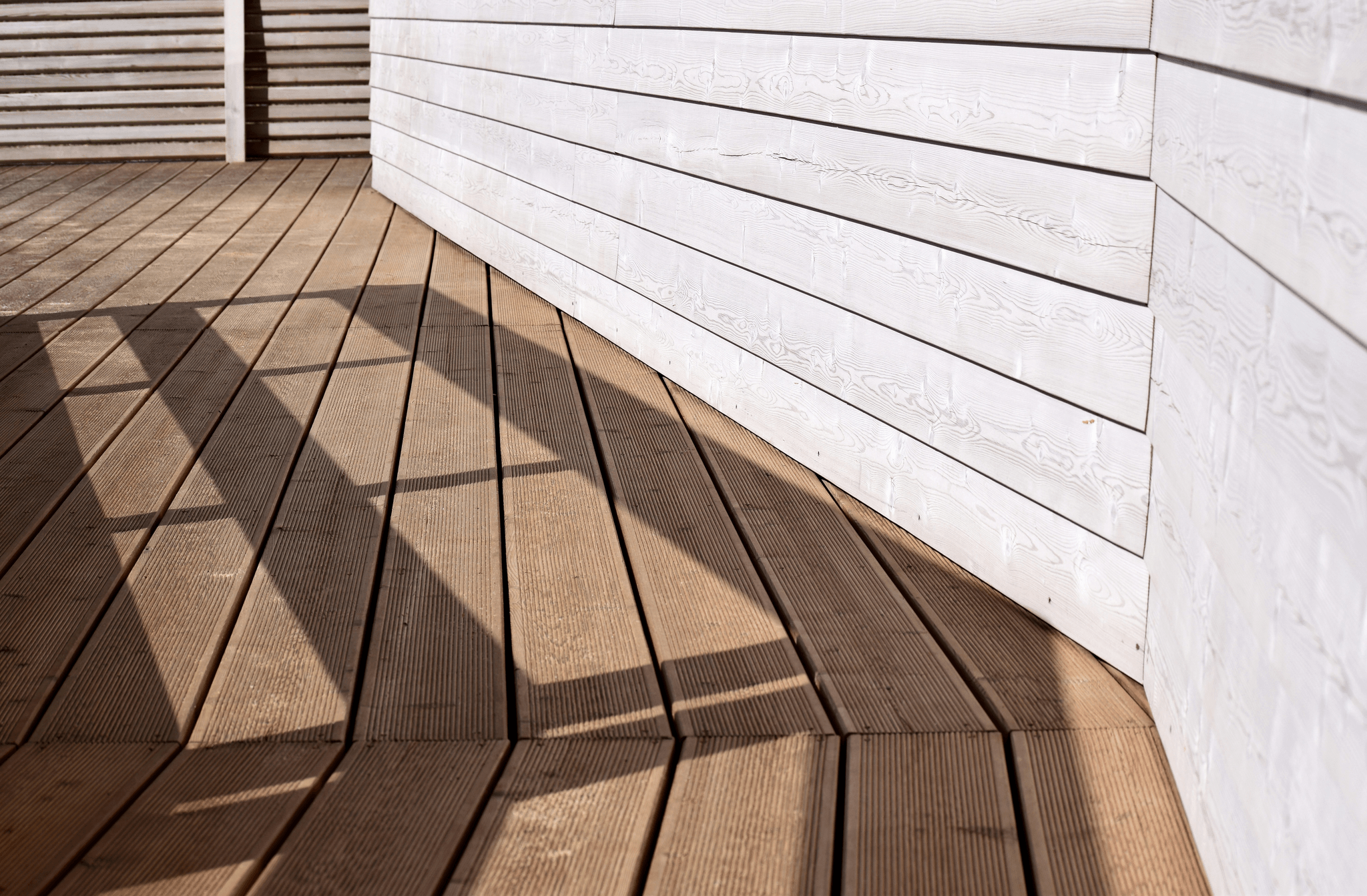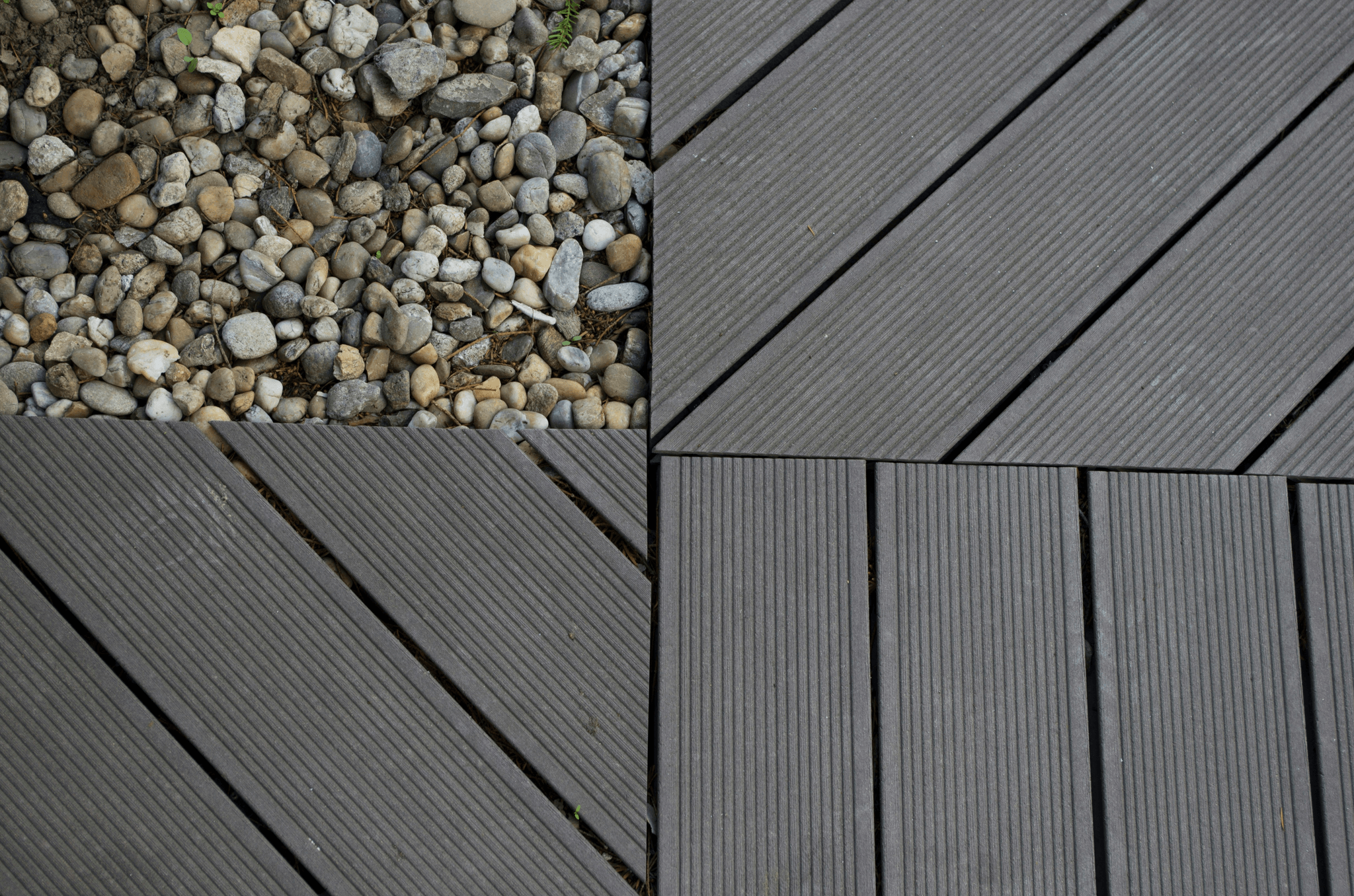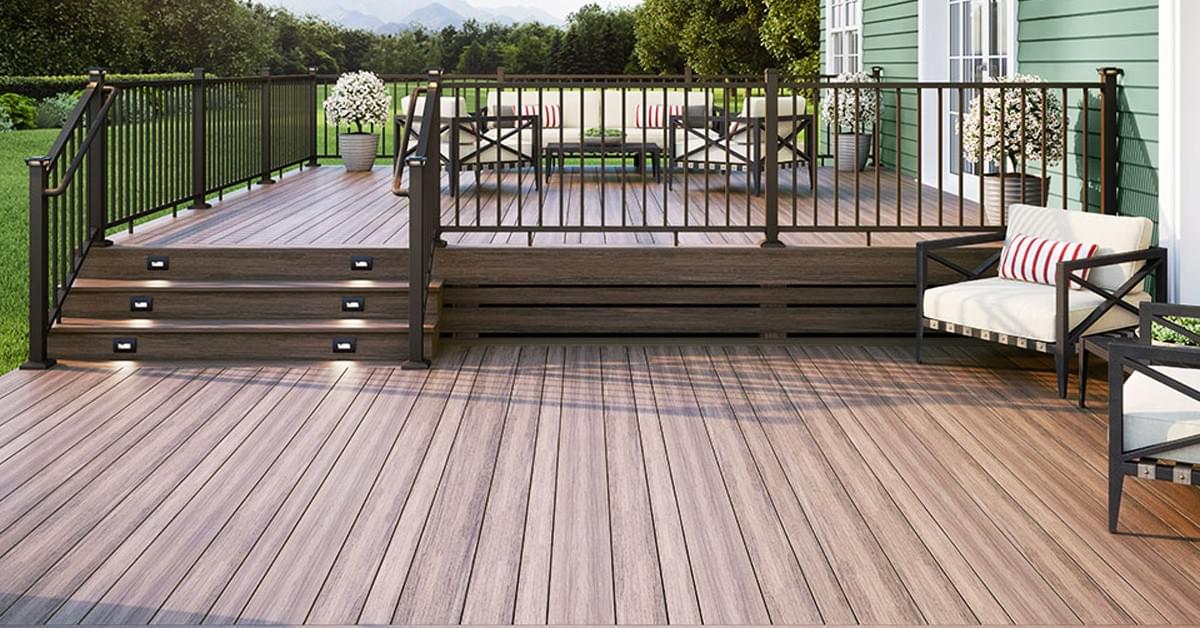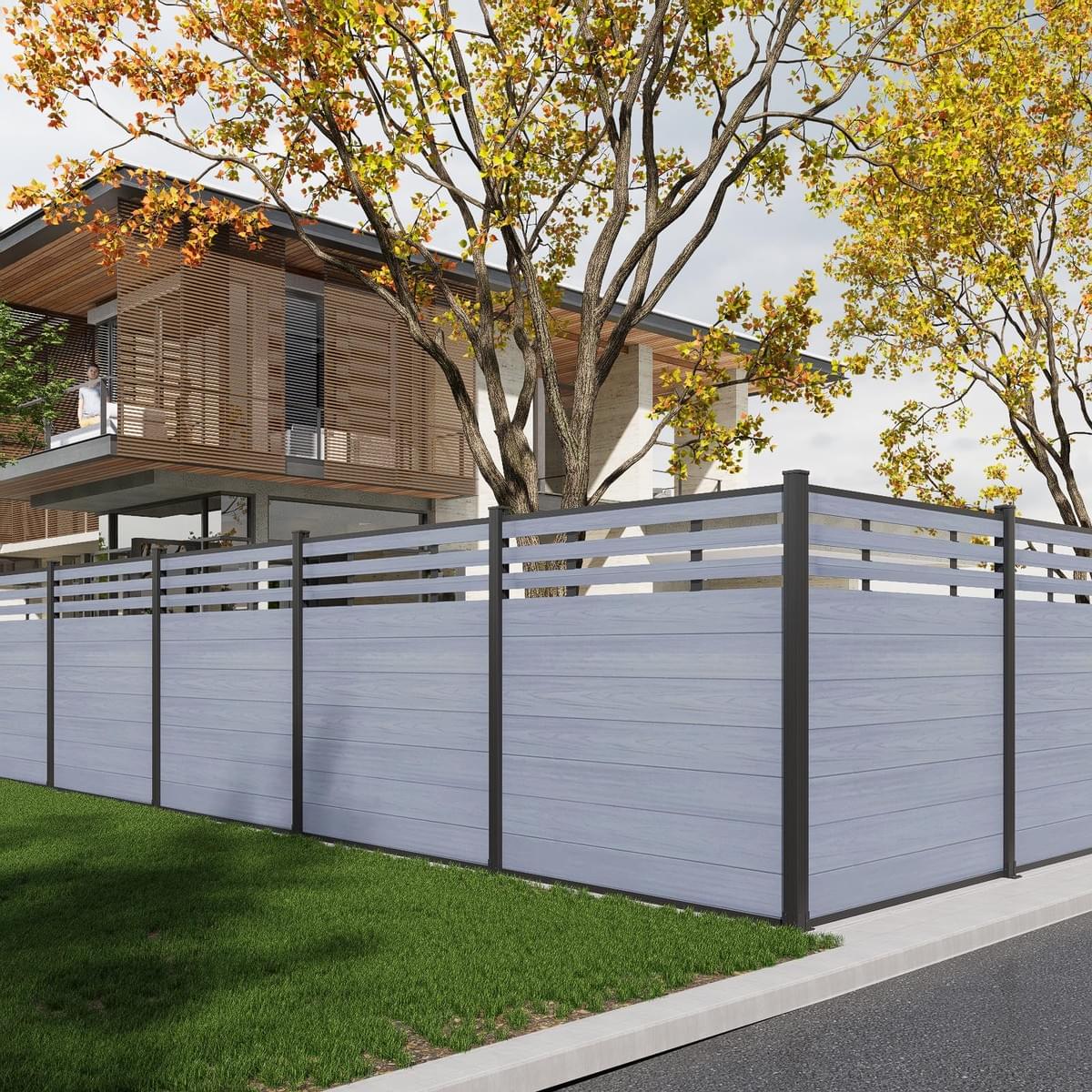Introduction
Among the most popular choices are composite decking and traditional wood, each offering unique pros and cons that cater to different preferences and lifestyles. Understanding these options can help you determine what is best for decking your home while ensuring durability and aesthetics.
Overview of Decking Options
Decking materials have evolved significantly over the years, with composite wood and PVC decking emerging as strong contenders against natural wood. Composite decking boards combine plastic and wood fibers to create a versatile material that mimics the look of wood without the same maintenance demands. On the other hand, traditional wooden decks offer timeless beauty but come with their own set of challenges, including susceptibility to rot and pests.
Why Choose Composite or Wood?
Choosing between composite decking and wood often boils down to personal preference, lifestyle, and budget considerations. While some homeowners appreciate the natural charm of real wood, others are drawn to the low-maintenance appeal of composite materials. It's essential to weigh the pros and cons of composite decking against those of traditional wood so you can make an informed decision that aligns with your long-term goals.
Understanding Material Durability
Durability is a crucial factor when selecting a decking material; after all, you want your investment to stand up against time, weather conditions, and everyday wear-and-tear. Composite decking typically boasts superior resistance to fading, staining, and splintering compared to its wooden counterparts. By understanding how each material performs in various climates, you'll be better equipped to choose a durable solution that suits your needs.
The Aesthetics of Decking

Homeowners often grapple with the pros and cons of composite decking versus traditional wood, weighing the visual appeal against practical concerns. Composite decking has come a long way in mimicking the natural beauty of wood while offering various colors and textures that can complement any home design.
Composite Decking vs. Natural Beauty
Composite decking often boasts an impressive resemblance to natural wood, but it's essential to recognize that it still has its own unique charm. While some purists argue that no synthetic material can replicate the warmth and character of real wood, others appreciate the consistency and uniformity that composite materials provide. When considering options like PVC decking or composite wood, you'll find a range of styles that cater to different tastes—ensuring you can achieve an inviting atmosphere without sacrificing durability.
Customization Opportunities
One of the standout features of composite decking is its customization potential, allowing homeowners to create a truly personalized outdoor space. With various colors, textures, and finishes available in composite decking boards, you can easily match your deck to your home's architecture or landscape design. Furthermore, many manufacturers offer accessories like railings and lighting solutions specifically designed for their composite materials—making it easy to create a cohesive look that's as functional as it is beautiful.
Visual Appeal Over Time
The visual appeal of your chosen decking material is not just about initial impressions; it’s also about how well it stands up over time. Composite decking typically resists fading and staining better than traditional wood, meaning its aesthetic will remain intact even after years of exposure to elements like sun and rain. Conversely, while natural wood may have undeniable charm when first installed, it requires regular maintenance to keep its appearance fresh—an ongoing expense that could affect your overall enjoyment of the space.
Maintenance Requirements

Upkeep of Composite Decking
One of the standout pros of composite decking is its low maintenance requirements compared to wood. Typically made from a blend of recycled wood fibers and plastic, composite wood resists fading, staining, and mold growth, making upkeep a breeze. A simple wash with soap and water or a gentle pressure wash once in a while is usually all you need to maintain its appearance—no sanding or sealing required!
However, it’s essential to note that while composite decking is durable, it's not entirely maintenance-free. Some brands may require occasional treatments with specific cleaning agents to avoid discoloration or grime buildup over time. Overall, when considering the best for decking options that require minimal effort in upkeep, composite materials shine brightly.
Wood Decking Maintenance Demands
On the flip side, wood decking demands much more attention if you want it to maintain its natural beauty and structural integrity. Regular tasks include sanding down rough spots, applying sealants or stains every couple of years, and checking for signs of rot or insect damage—talk about commitment! Depending on your climate and exposure to elements like rain or sun, these maintenance needs can become quite labor-intensive.
Moreover, untreated wood can warp or splinter over time if left unprotected from moisture and UV rays. This not only adds extra work but can also lead to costly repairs if damage occurs—a downside many homeowners overlook when selecting their decking material. In terms of long-term durability versus ongoing care requirements, it's clear that traditional wood has significant demands compared with composite options.
Long-Term Cost Implications
When weighing the long-term cost implications between composite decking and wood options, it's essential to consider both initial investment and ongoing maintenance expenses. While the upfront cost for composite decking boards may be higher than some types of wood decks—often influenced by factors like brand reputation—the reduced need for upkeep can save you money in the long run. You won’t have those recurring costs associated with stains or sealants eating away at your budget year after year.
Additionally, consider how often you'll need repairs on a wooden deck due to weather-related wear-and-tear; these costs can add up quickly! In contrast, investing in high-quality composite materials often means fewer headaches down the road—less chance for splinters means fewer band-aids needed! Ultimately, understanding these financial aspects will guide you toward making an informed choice about which material fits best into your lifestyle.
Environmental Impact

When it comes to decking materials, the environmental impact is a significant factor to consider. Homeowners today are increasingly conscious of their choices, especially regarding sustainability and eco-friendliness. Understanding the pros and cons of composite decking compared to traditional wood can help in making an informed decision that aligns with personal values.
Sustainability of Composite Materials
Composite decking is often praised for its sustainability, as it typically incorporates recycled materials such as plastic and wood fibers. This means that choosing composite wood not only reduces waste but also minimizes the demand for new timber from forests. Moreover, many composite decking boards are designed to last longer than traditional wood, which means fewer resources are used over time for replacements.
However, it's essential to weigh the pros and cons of composite decking carefully; while it may be more sustainable than some alternatives, not all brands prioritize eco-friendly practices equally. Additionally, while PVC decking offers durability and low maintenance, its production can involve chemicals that may raise environmental concerns. Ultimately, when considering composite decking material, look for products that emphasize recycled content and sustainable manufacturing processes.
Wood Sourcing and Deforestation
The sourcing of wood for traditional decks raises serious environmental issues related to deforestation and habitat loss. Many popular hardwoods come from tropical forests that are being depleted at alarming rates due to logging practices that prioritize short-term gains over long-term sustainability. This not only threatens biodiversity but also contributes significantly to climate change by reducing the number of trees available to absorb carbon dioxide.
In contrast, opting for composite decking can mitigate some of these issues since it often uses recycled materials rather than relying solely on virgin timber. However, it's crucial to research where any wood components in your chosen product originate from; responsible sourcing should be a priority if you decide on a wooden deck instead of composite options. By understanding these dynamics between wood sourcing and deforestation impacts, you can make more environmentally responsible choices.
Composite Decking Inc's Eco-Friendly Practices
Composite Decking Inc has made significant strides in promoting eco-friendly practices within the industry by focusing on sustainability throughout their entire production process. They utilize high percentages of recycled materials in their products while ensuring minimal waste during manufacturing—an admirable commitment towards reducing their carbon footprint. Furthermore, they engage in responsible sourcing practices by partnering with suppliers who adhere strictly to sustainable forestry standards.
By choosing brands like Composite Decking Inc., homeowners can feel confident they’re selecting a product that's not just durable but also environmentally conscious—a win-win situation! These companies often provide transparency about their materials' lifecycle impacts so consumers can better understand how their choices affect the planet long term. Ultimately, going with composite options like those offered by Composite Decking Inc could represent one of the best decisions for both your home aesthetics and our environment.
Cost Comparison

When it comes to choosing the best decking material, understanding the cost implications is crucial. Both composite decking and traditional wood have their own set of pros and cons that can significantly impact your wallet today and in the future. In this section, we’ll break down the initial investment, long-term value, and financing options available for homeowners considering these popular decking materials.
Initial Investment in Decking Choices
The initial investment in composite decking often tends to be higher compared to wood options. Composite decking boards price can vary widely based on brand, quality, and features such as color or texture. However, while you may pay a premium upfront for composite wood or PVC decking, many homeowners find that this investment pays off over time due to reduced maintenance costs.
On the other hand, traditional wood decks typically come with a lower price tag at first glance. Yet it's essential to factor in additional expenses such as staining, sealing, and potential repairs that can add up quickly over the years. Thus, while wooden decks might seem cheaper initially, they could end up costing more than their composite counterparts when you consider ongoing upkeep.
Ultimately, your choice of decking material should align with both your budget and long-term goals for your outdoor space. Composite materials may be pricier upfront but offer durability that could save you money down the line—so think about what works best for you!
Long-Term Value and Resale
When evaluating long-term value in terms of resale potential, composite decking often shines brighter than traditional wood options. Homebuyers are increasingly looking for low-maintenance outdoor solutions; thus having a well-maintained composite deck can significantly enhance your property’s appeal on the market. This is where understanding the pros and cons of composite decking becomes vital—its durability means less wear over time compared to natural wood.
Conversely, wooden decks may require more frequent repairs or replacements due to weathering or pest damage—factors that could deter potential buyers if not addressed properly. The maintenance history of a wooden deck can make or break its resale value; neglect it too long and you might find yourself losing out on offers!
In summary, investing in high-quality composite materials not only provides immediate enjoyment but also contributes positively to your home’s marketability when it comes time to sell.
Financing Options for Homeowners
Financing options are an essential consideration when choosing between different types of decking material like composite versus wood. Many homeowners opt for loans or home equity lines of credit (HELOCs) specifically designed for home improvement projects—including those involving high-end finishes like PVC decking or stylish composite boards! These financing solutions allow you to spread out payments over time while enjoying your new outdoor space right away.
Additionally, some suppliers offer payment plans tailored specifically for their products—making it easier than ever to access premium quality without breaking the bank upfront! Always inquire about any promotional financing deals available from retailers specializing in composite materials; this could lead to significant savings if timed right.
In conclusion, whether you're leaning towards durable composites or classic woods for your next project depends largely on how financing fits into your overall budget strategy. With thoughtful planning around both initial costs and future value considerations—homeowners can make informed decisions that cater not just their tastes but also their financial health!
Performance in Various Climates

How Weather Affects Each Material
Weather plays a pivotal role in determining the durability of your chosen decking material. Composite decking, made from a blend of plastic and wood fibers, can withstand extreme temperatures without warping or cracking, making it a solid choice for areas with fluctuating climates. On the other hand, traditional wood decking may expand and contract with temperature changes, leading to potential issues like splitting or splintering over time.
Rain and humidity can also wreak havoc on natural wood decks if not properly maintained. Wood is susceptible to mold, mildew, and rot when exposed to moisture without adequate sealing or treatment. In contrast, composite materials are designed to resist moisture absorption, making them less prone to these weather-related issues.
Ultimately, if you live in an area with harsh winters or sweltering summers, composite decking may be your best bet for longevity and performance. Its resilience against varying weather conditions means fewer repairs and replacements down the line compared to its wooden counterpart.
Resistance to Pests and Rot
One of the significant advantages of composite decking is its resistance to pests such as termites and carpenter ants that often feast on traditional wood materials. The synthetic components in composite wood deter these pests effectively, allowing homeowners peace of mind when it comes to maintenance concerns related to insect damage. Conversely, untreated wooden decks can attract pests if not regularly treated with protective coatings.
Moreover, rot is another enemy that threatens wooden decks—especially those exposed directly to moisture without proper care or sealing treatments. Composite decking boards are engineered specifically for this purpose; they resist rotting due to their non-porous surface that prevents water from seeping into the structure itself. This makes them an excellent option for homeowners who want a low-maintenance solution that remains structurally sound year after year.
In summary, when considering the pros and cons of composite decking versus traditional wood options in terms of pest resistance and rot prevention, composite materials shine as a superior choice for long-term durability.
Longevity Expectations
Longevity is arguably one of the most compelling reasons people choose composite over natural wood as their preferred decking material. While traditional wooden decks typically last around 10-15 years with proper upkeep—think frequent staining or sealing—the lifespan of composite decking can extend well beyond 25 years with minimal maintenance required! This impressive durability means fewer headaches down the road regarding repairs or replacements—a significant factor when weighing initial costs versus long-term value.
The price point associated with composite decking boards might seem higher upfront compared to basic lumber options; however, considering their extended lifespan makes them more economical over time—an investment worth pondering! Not only do you save on repair costs later on but also enjoy enhanced aesthetics throughout those years since they resist fading better than many types available today.
In conclusion: If you're looking at longevity expectations between various options available out there today—from classic cedar planks all way through PVC decking alternatives—it’s clear that opting for quality composites could lead you straight towards satisfaction without constantly worrying about wear-and-tear affecting your outdoor oasis!
Conclusion
In the quest for the perfect decking material, homeowners must consider various factors that influence their final decision. Whether you lean toward composite decking or traditional wood, understanding the pros and cons of composite decking is essential. Each option presents unique benefits and drawbacks, making it crucial to evaluate what aligns best with your lifestyle and home aesthetics.
Making the Right Choice for Your Home
Choosing the best for decking involves more than just looks; it requires a deep dive into functionality, durability, and maintenance. Composite wood offers a blend of beauty and resilience, often requiring less upkeep than its wooden counterparts. On the other hand, traditional wood can provide an authentic feel but may demand more frequent care to maintain its charm.
Weighing the Long-Term Benefits
When weighing long-term benefits, consider not only initial costs but also ongoing maintenance expenses associated with each decking material. While composite decking boards price may initially seem higher than wood options, their longevity can lead to significant savings over time due to reduced maintenance needs. Ultimately, investing in quality materials today could save you headaches—and dollars—down the line.
Composite Decking as a Sustainable Solution
For environmentally conscious homeowners, composite decking stands out as a sustainable solution in today's market. Made from recycled materials and designed to last longer than traditional wood without contributing to deforestation, it checks many boxes for eco-friendliness. By choosing composite decking material over conventional options like PVC decking or untreated lumber, you contribute positively to environmental preservation while enjoying a beautiful outdoor space.
